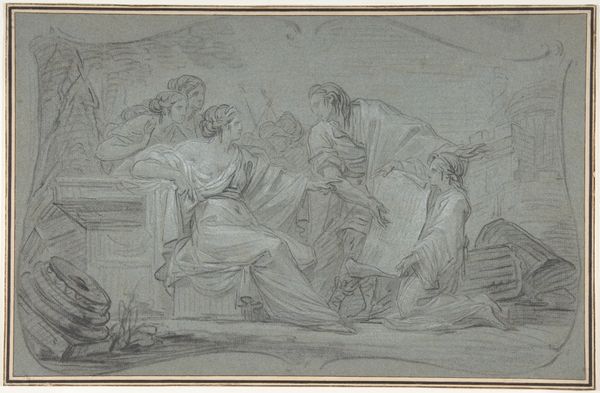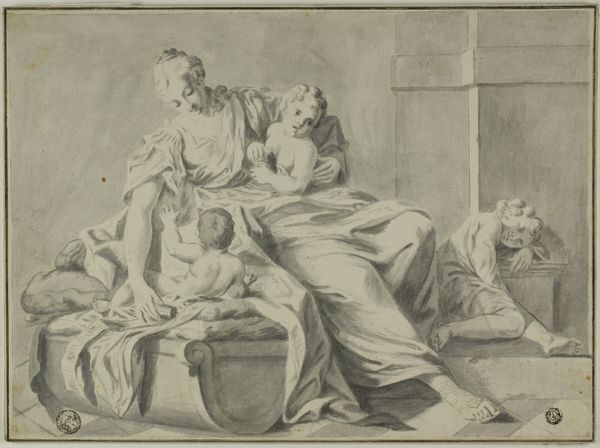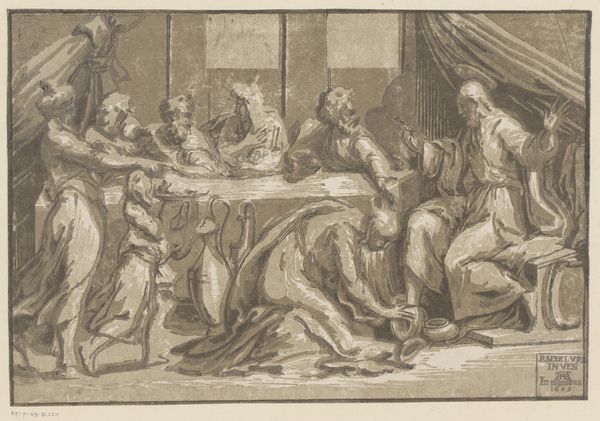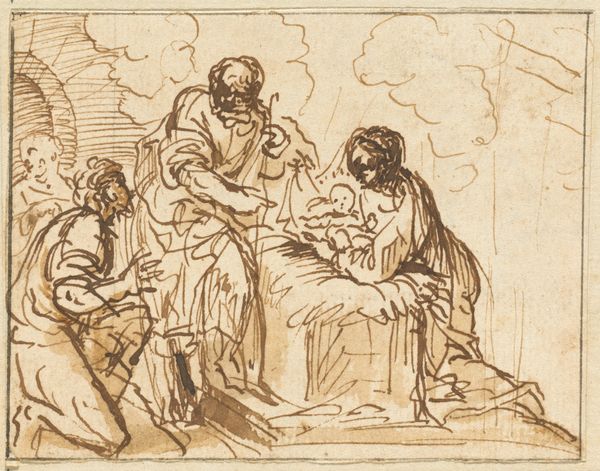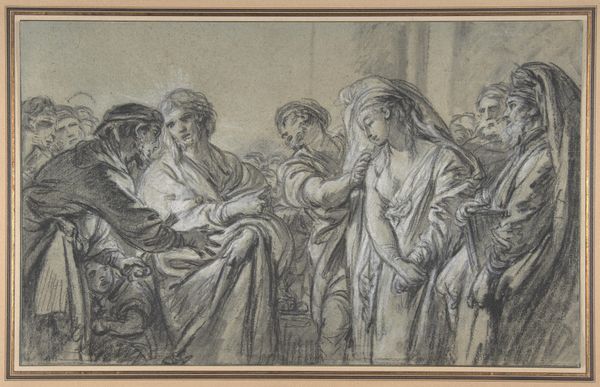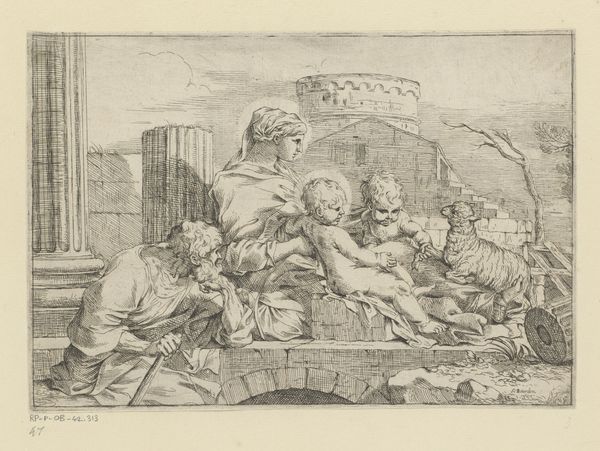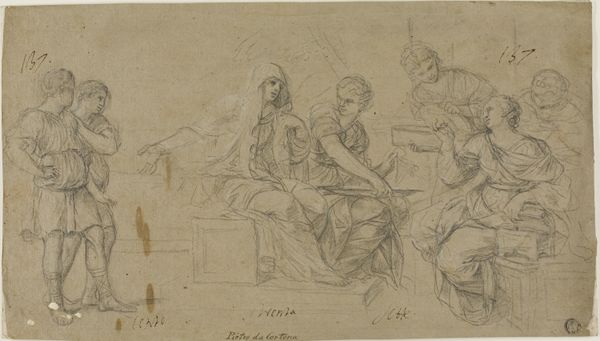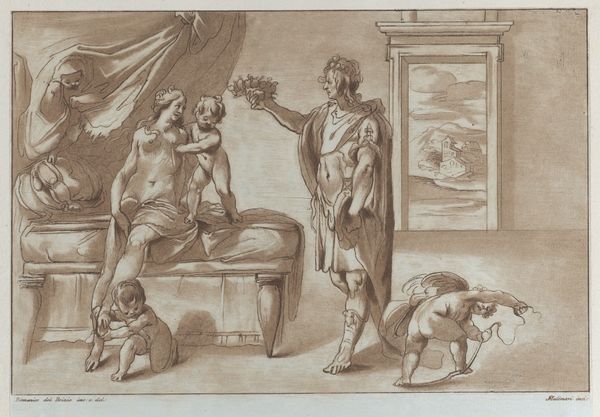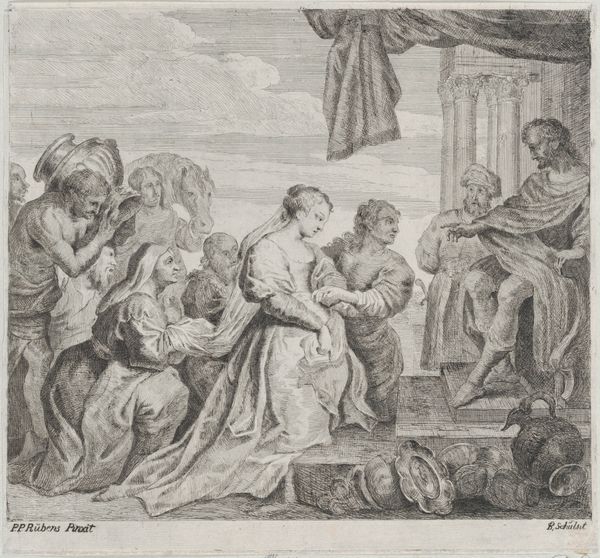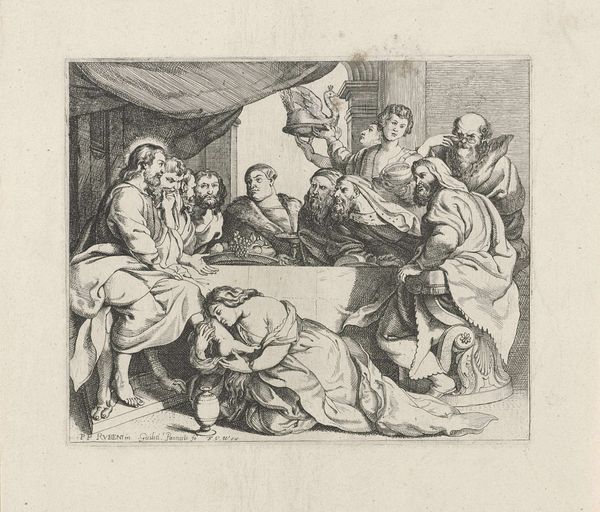
Jupiter and Mercury in the House of Baucis and Philemon 1700 - 1761
0:00
0:00
drawing, print, charcoal
#
drawing
#
narrative-art
#
baroque
# print
#
classical-realism
#
charcoal drawing
#
figuration
#
charcoal
#
history-painting
#
academic-art
Dimensions: sheet: 9 13/16 x 13 13/16 in. (24.9 x 35.1 cm)
Copyright: Public Domain
Curator: Hyacinthe Collin de Vermont invites us into an intimate moment with his drawing, “Jupiter and Mercury in the House of Baucis and Philemon,” believed to be created sometime between 1700 and 1761. The artist used charcoal to bring to life this scene, and the piece is currently housed at The Metropolitan Museum of Art. Editor: The subdued palette lends a dreamlike quality, almost sepia-toned. There’s a real sense of reverence in the way the figures of Baucis and Philemon are depicted – very different to the lounging gods. Curator: The narrative stems from Ovid’s Metamorphoses. Jupiter and Mercury, disguised as travelers, are seeking shelter, and only the elderly couple, Baucis and Philemon, offer them hospitality. The scene captures the moment the gods reveal their true identities. Think about how such tales served to validate certain social behaviors – rewarding piety, hospitality, and humility, for instance. Editor: It is interesting to observe how de Vermont presents these figures of legend and myth in a remarkably domestic setting. Note the carefully arranged vessels above the hearth and the humble meal spread before the deities. This draws a deliberate parallel between the earthly and divine. Curator: The emphasis on gestures is significant. Consider Philemon kneeling, his hands clasped in prayer, juxtaposed with Jupiter’s relaxed pose. It’s a potent display of faith encountering the divine, reflective of Baroque sensibilities regarding religious expression. Editor: And Mercury, though an immortal, shares a look of almost melancholic acknowledgment of their hospitality and of the impending gratitude soon to be bestowed upon them. It underscores the gravity of their situation, contrasting it with the simplicity and earnestness of the elderly couple. Curator: The very choice of charcoal speaks volumes, suggesting a deliberate roughness that perhaps served to enhance the moral of the story of honest, poor people being rewarded. Editor: Looking at the cultural value of generosity, illustrated through classical tales – that’s definitely resonated throughout time. Curator: Precisely. Even now, after centuries, Collin de Vermont's drawing still urges us to reconsider the stories and symbols by which we live and understand virtue.
Comments
No comments
Be the first to comment and join the conversation on the ultimate creative platform.
